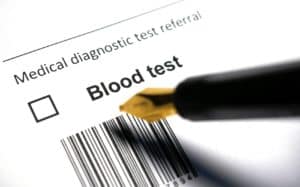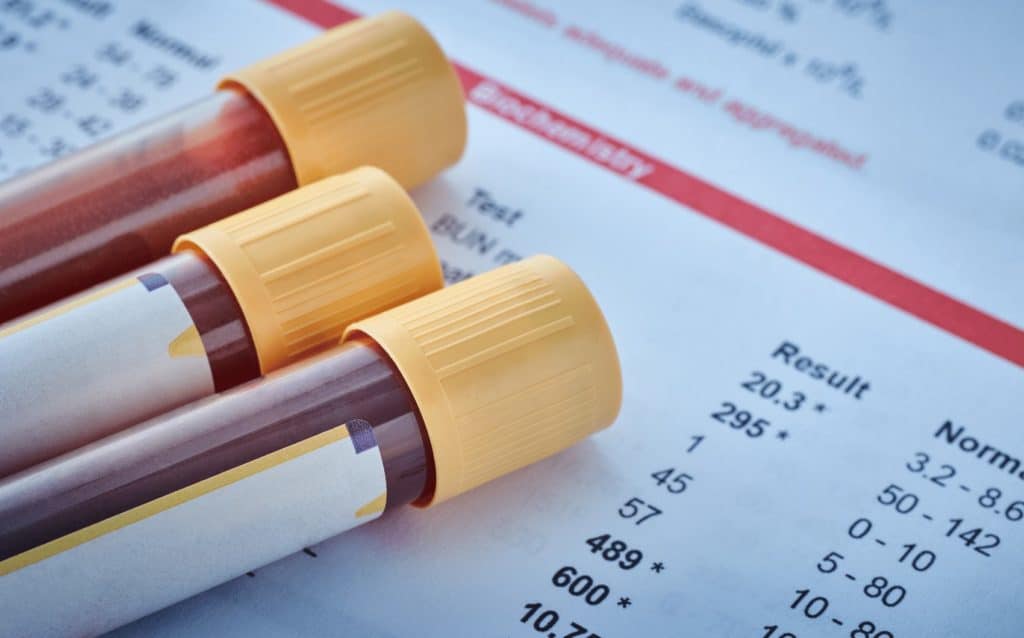Underestimated Blood Tests That Reveals The State Of Your Metabolism
The results of blood tests are misused in healthcare. The results are interpreted out of context. A typical example is elevated levels of cholesterol, to which unqualified doctors are rapidly prescribing medication. Laboratory results should always be evaluated in context and, considering all causes and effects.
In the cholesterol example mentioned above, only a really small proportion of people have a problem that requires cholesterol medication after the overall risk mapping (FINRISKI calculator, wink-wink).
Also, they are often staring at older benchmarks or reacting to things only (not always!) when some of the values meet the “criteria of the disease”.
A good example of this is elevated blood sugar, which is interpreted as normal for years until it is suddenly found that “Yeah, poof, now it’s diabetes”. Diabetes never develops in an instant and is always a process of many years, in addition to which the diagnosis is made 3 years late on average, where many years of important time has been lost.
I’d like to share my methods of evaluating blood tests and what they tell us about the person’s metabolism.
Everyone knows that metabolism can be assessed based on blood sugar and cholesterol, but in this text, I will talk about lesser-known but equally good and common indicators.
The most important message, of course, is that nothing should be judged alone without the bigger picture, without considering the person as a whole.
NOTE! This text is not intended to replace medical judgment or to diagnose or exclude diseases. Always consult your doctor or nurse about the results of blood tests.
ALT – Alanine transaminase or “liver marker” – one of the most sensitive experiments suggesting visceral fat.
The problem is that ALT is also extremely sensitive to other stimuli – painkillers, stomach flu, alcohol. However, for most people, a slightly elevated and upward trend in ALT is a sign of an increase in liver fat. At this point, I always ask (or look at or measure) a person’s waist – most definitely it exceeds the reference range.
Smoking increases low-level inflammation.
CRP – C-reactive protein or “inflammatory value”. CRP is one of the more sensitive risk factors for cardiovascular diseases.
CRP is most often measured in healthcare for infections (most often high CRP indicates bacterial and/or more severe inflammation).
In this case, we are talking about the level of CRP in an otherwise completely normal physiological state (no stress, infections, injuries, etc.).
In that case, it can be assessed whether there is a chronic inflammatory state in the body. All people always have some CRP in the bloodstream (resistance), but levels increase permanently in a low-grade inflammatory state.
There are many causes of low-grade inflammation (rheumatic diseases, smoking, cancer), but in 99% of cases, it is a metabolic syndrome. The best test for this is hs-CRP or high-sensitivity CRP.
Interpretation: CRP, which is regularly in an otherwise neutral physiological state >1, is a sign of low-grade inflammation in the body and an increased risk of vascular diseases, cancer, memory disorder, etc. Compare to levels of fat, blood sugar, urate, the circumference of the waist and weight.
[grwebform url=”https://app.getresponse.com/view_webform_v2.js?u=yhX3C&webforms_id=27292103″ css=”on” center=”off” center_margin=”200″/]
MCV – mean corpuscular volume, or the size of red blood cells. MCV is always included in CBC (complete blood count), in addition to hemoglobin, white blood cells, etc.
The size of red blood cells is sensitive to specific changes in the body, which is why it is often an indicator concerning these changes.
Interpretation: MCV values below the reference range most often indicate iron deficiency, where ferritin levels should be checked at least. Beyond the reference range, it indicates the overuse of alcohol and/or the lack of vitamin B12 or folate, for example.
A typical mistake is not responding to MCV if the hemoglobin levels are okay. In most cases, however, the problem has progressed extremely far when it affects the amount of hemoglobin.
Urate – or “gout marker”. Currently, urate is used mostly for the detection and/or exclusion of gout. Urate is a much more complex indicator.
It correlates very well with metabolic disorders and visceral fat, but not with insulin resistance – which means that this is a very good indicator for assessing metabolic disorders and the risk of cardiovascular disease in a situation where blood sugar levels are in order.
Interpretation: Rarely early urate levels over reference values can be seen, even with cases of acute gout, but mostly the values of over 400 in men and over 300 in women indicate a low-level inflammatory state and visceral fat.
A high level of urate can also surely be a sign of gout, but in reality, gout occurs almost always later with metabolic adaptation. Compare it to CRP, blood sugar and fat levels, the circumference of the waist and weight.
The more visceral fat and the higher the level of inflammation in the body, the lower the level of testosterone.
Testosterone – the male sex hormone, which also plays an essential role in women’s bodies, but we will not elaborate that more than this.
In men, testosterone correlates with metabolic syndrome – the more visceral fat and the higher the inflammatory state in the body, the lower the testosterone levels.
The body recognizes when a man is not able to reproduce and it is not worth investing in at that moment.
However, a decrease in testosterone causes the situation to get worse – a decrease in mood, a decrease in metabolic rate, a decrease in muscle and bone mass, decreased libido and erectile dysfunction, a decrease in physical performance, etc.
All of these contribute to weakening the metabolism. Most testosterone-deficient men come to the office to ask for testosterone when instead they should be treating their metabolic disorder. Watch my video on the subject.
Testicular failure (which requires testosterone treatment) can be easily distinguished from this using an FSH test.
Interpretation: Low testosterone associated with being overweight, decreased muscle mass, passive lifestyle, smoking, diabetes, and other metabolic problems, is almost always a sign that metabolism is slowed down, and the body has chosen not to increase.
Compare to levels of fats, CRP, urate, the circumference of the waist and weight.
Triglycerides – or “regular fats” in a package of cholesterol.
Nowadays the level of triglycerides is always mentioned with the so-called lipid tests.
We are accustomed to paying attention to total cholesterol only, but the best measure of metabolism and the most often missed indicator is the level of triglycerides.
Triglycerides are the regular fat – light, soft, fat – the kind of fat that accumulates on the outside of the liver, pancreas, between heart cells and blood vessel walls.
According to some studies, triglycerides are a better indicator of the risk of cardiovascular diseases than HDL/LDL. In practice high levels of triglycerides most often indicate that there is an “overflow of fats” in the body – there is so much fat in the cells that more can’t be taken in and the excess remains in the bloodstream.
Interpretation: Levels above 1.8 indicate an excess of fat in the blood circulation. Most often it is caused by a metabolic disorder, but also by smoking and alcohol. If the body consumes all the calories eaten, fatty foods do not increase triglyceride levels. Compare to levels of cholesterol, CRP, urate, the circumference of the waist, and weight.
Final decisions cannot be made using results from single tests, the results must be compared to prevailing conditions and other tests. There are many other tests than cholesterol and blood sugar that can be used to make conclusions about health. The results of blood tests do not need any treatment, people do – which is different from what is done in health care nowadays.
Recent Posts
How To Reverse Fatty Liver Disease Through Diet (7 Day Sample Diet)!
Is A Fatty Liver Reversible? Fatty Liver Diet Plan and MenuHere we tell you everything you need to know about the fatty liver diet, menu, recipes, tips, and tricks.Did you just get diagnosed...
How to lose weight for teenage girls. A complete guide with tips
Lose weight and surprise your friends with your transformation. Follow our exclusive weight loss tips, healthy diet, and workout routine for teenage girls-all backed by science and recommended by...



